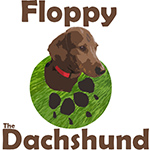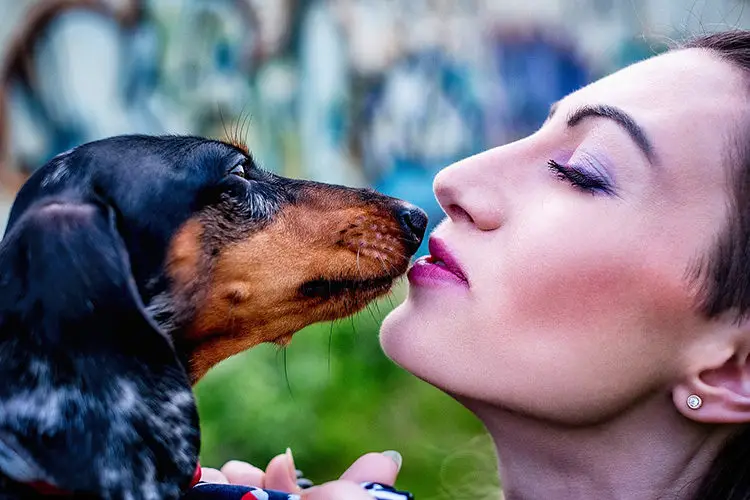Dachshund owners often have to deal with behavioral problems, which can sometimes be frustrating. However, with research and behavioral techniques, it is possible to manage most of these challenges. Veterinarians can also be good sources of support when it comes to behavioral issues with your dog.
Common Behavioral Issues With Dachshunds
A number of problems can be addressed with behavior modification, training or emotional desensitizing. It is important to treat issues before they become more serious. It is highly recommended that you start their puppy’s training and socialization as soon as you bring him home. If any of your dog’s issues are extreme, it is best to consult a certified trainer or broad behaviorist for help.
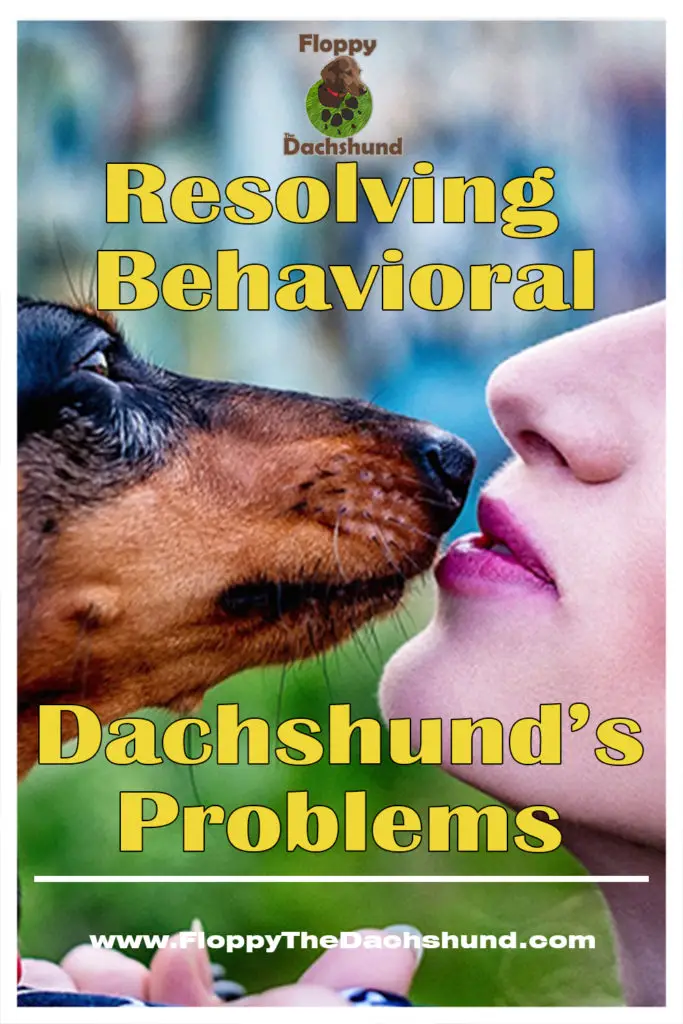
Most behavioral issues are related to aggression in some way. Being a pack animal, aggression is natural when establishing order in the pack and also for ruling their domain. Aggression is also a sign of extreme frustration, which is generally related to under-stimulation or boredom. For example, dogs that are left alone for long periods or dogs that have not been provided structure can show signs of aggression like barking or lunging.
One simple solution, separate from specific behavioral modification tools, is to take your dog out for a regular walk or exercise routine, which will help him expel energy. An energized dog has more chance of exhibiting attention issues and hunters will also be less likely to seek attention through undesirable behavior.
Anxiety
Dogs are pack animals; they thrive and require the companionship of other members. As a result, dogs make wonderful companions. They like and need to be in the company of their perceived pack. However, if a dog starts to feel like he has become separated from his pack (owner) or that he is not receiving sufficient attention or they don’t know who will lead, problems can arise. Furthermore, anxiety is also caused by separation anxiety or boredom.
Boredom
If your dog engages in unusual behavior at home, perhaps even in the next room, most likely he is under-simulated and seeking attention. Some of the common issues related to boredom can be barking, chewing, pottying in the house, or simply getting into what he is not supposed to. All these acts are for attention. If this happens, add more activities to the time that you spend with your dog. For example, take him for a walk, play fetch or any other favorite game of his, and teach him an appropriate signal to communicate to you when it is time to do something. When assessing if your dog is developing a behavioral issue, pay attention to any small cues he might be giving you to tell you that something needs addressing.
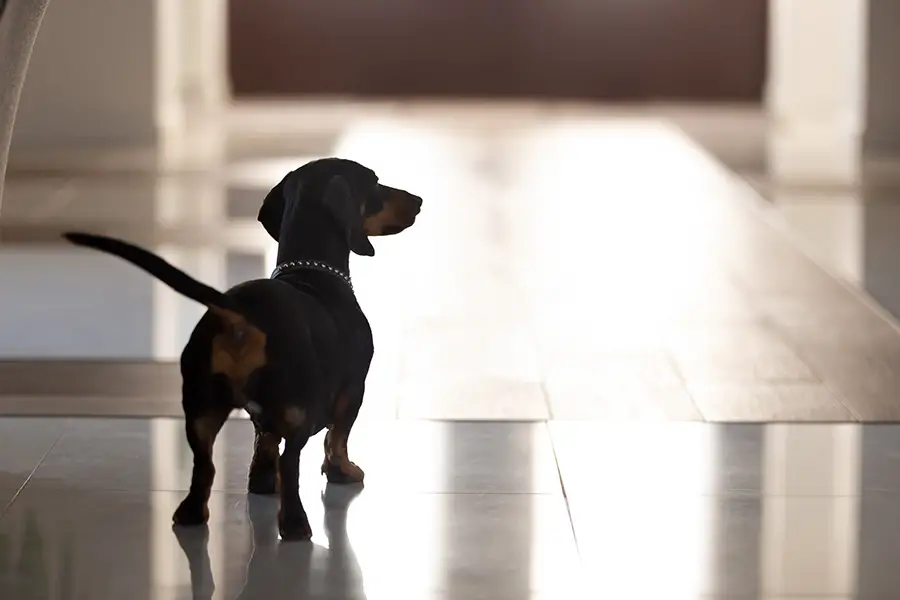
Separation Anxiety
If I start following you from room to room or I need you to touch me often, I may be in distress and experiencing separation anxiety. In an extreme case, I may also indulge in destructive behaviors, such as chewing on doors or other objects in order to escape. I may also jump out through a window or I may chase my shadow or chew on myself while trying to deal with my anxiety. If I exhibit any of these behaviors, it is very important that you start working on eradicating my extreme fear of being left alone. It is also important that you acknowledge that my fear is real and work to help me deal with it. You should be patient, kind, and consistent when doing so.
Puppies are less likely to exhibit symptoms of severe separation anxiety unless their previous owner was abusive or they came from a puppy mill. The key to overcoming separation anxiety in dogs of any age is to recognize that when I act out, I am trying to reach out to you for your help in resolving an issue.
Aggression
Aggression can be associated with a particular object or situation. It will result in unwanted behavior regarding the fence, his kennel, his toy, or even food aggression. However, these behaviors can be treated with the help of proper training. There is a difference between depression and these behaviors. True aggression is a behavior that is associated with an extreme emotional issue. A dog that has faced an abusive situation in the past, or who were not socialized as puppies, or who were traumatized in the past may actively pose a significant threat of harm, not only to the owner but also to strangers, children and other dogs. If the level of aggression is very serious and highly unpredictable, your dog will need the help of a trained behaviorist.
While they are playing, puppies are adorable. We generally laugh when we see their sharp little teeth while they jockey for dominance. However, such behavior should be immediately stopped or else it may result in major problems when that cute little puppy becomes a grown-up dog who believes himself to be invincible. Puppies that are allowed to play too rough need the attention of their owners if their play involves aggressive behavior and their
teeth. If aggression and use of teeth is ignored, the puppy could suddenly attack another dog or a person. If this happens, it won’t be the puppy’s fault; it is the fault of the owner.
Similarly, an owner should not use commands like ‘get ‘em!’ under any circumstances and they should not provide any positive reinforcement for aggressive behavior. Teasing or promoting an aggressive reaction is strongly discouraged. If you want your dog to behave appropriately, you also need to behave appropriately.
Kennel Aggression
Most often, kennel aggression occurs when a dog is immersed in a confined situation that he doesn’t understand. Generally, shelter workers have to deal with this type of aggression because some breeds, like dachshunds, do not do well in confined situations. Usually, they have never known such an environment and they find the loudness of all the other animals very frightening.
Because space is very limited in dog shelters run by the government, dogs showing kennel aggression are generally the ones who are first to be Put To Sleep (PTS) because they do not show well and tend to bite or nip any person who tries to come close. This behavior makes them un-adoptable. If they are lucky to be in the care of shelter staff who understand the problem, a breed-specific rescue may be called for intervention. However, if the rescue is not equipped to deal with aggression that goes beyond the kennel, there is little hope for the dog.
In some shelter cases, a dog may feel that his kennel is the only safe place and he will show signs of aggression when someone tries to remove him from it or when someone comes near him. Even if it is small, a dog will view his kennel as his territory and he will feel the need to protect it.
Possession
The issue of possession is a tricky one. This issue revolves around others. Possession takes place when a dog feels a sense of ownership. Dogs have an innate desire to protect what belongs to him, be it his food, domain or toys. Possession is normal, but being overly aggressive in this regard can be dangerous for the owner, their family and friends, and other dogs. Even if it is okay for your dachshund to put a toy somewhere where others cannot find it, it is not okay if he attacks anyone who comes near it or someone who may have possession of the toy.
In general, this behavior happens at home when the dog feels comfortable and has established his boundaries. A new dog will not show any signs of possession until he starts feeling confident in his new environment. An owner should use caution and remain mindful of the potential of possessiveness, particularly in the case of a rescued dog.
In the case of new dogs, particularly older ones, one of the first things he may become possessive about is his owner’s lap. It does not matter if they have lived there for a day or several months, their owner’s lap appears to be the first place they feel comfortable in and in control of.
When a new dog has been adopted into a family that already has dogs and children, the first place where a dog is going to find comfort is in the arms or the lap of his owner. In some extreme cases, a dog may literally go into attack mode when another dog or child comes into the lap of the person they have become possessive of. If this happens, do not put the dog down as he could go after the other dog or the child.
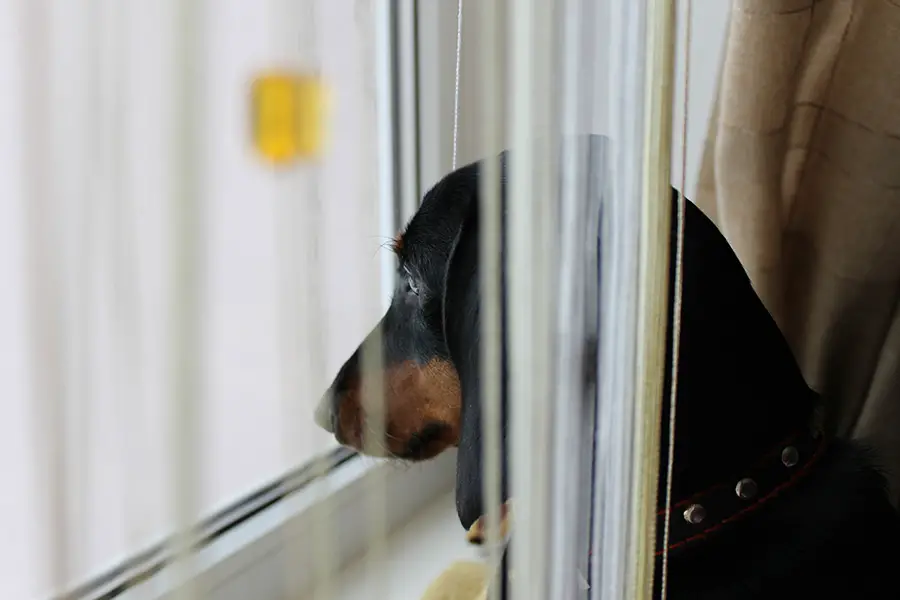
Predatory
Dachshunds are very intelligent, fast and agile. They love to run and they also love the thrill of a chase, even more than the end result of the chase. As with many other hunting breeds, hunting, killing, or eating small animals is part of a dachshund’s nature. Most animals will hunt if they are left in the wild. However, this problem is generally more prevalent in smooth and wire-haired dachshunds, and not so as much in long-haired dachshunds.
Due to my predatory instinct, I may not always be the best companion for small children or the family cat. Unfortunately, raising me along with the children and cats does not guarantee that my predatory instinct won’t surface. In general, you can tell if a dachshund, whether young or old, is going to have an issue in this area before you bring him home. If you are thinking of adopting a dachshund from a rescue or a shelter, ask them to conduct a cat test on the dog before bringing him home. Most rescues and shelters are willing to invest their time in conducting this test for you.
Territorial
Being territorial is an instinct of every creature on earth. As humans, we draw lines and protect our property by using whatever means available to us. In this regard, a dachshund is not any different. For any dog, its perceived territory is very important to him. It is normal for any dog, including a dachshund, to protect its territory by barking or alerting someone with a low growl while lying on the couch and when someone or something enters their world.
Conclusion
By providing proper training, a dachshund that has a well-defined territory and command training will become an excellent watchdog. In fact, we are excellent watchdogs, as we have had centuries of ‘alerting’ bred into us. However, if they don’t receive proper training, they will become alert to every sight and sound that they do not understand or that which is new for them.
It is also equally important to socialize with him as often as possible. An owner should work with their dachshund by providing training daily. Don’t assume your dachshund is perfect even if the best has been provided for him.
I am very intelligent, but I also have a splash of willfulness that keeps my owner on her toes. How willful I am may depend on my age. The key to maintaining peace in a dachshund family is consistency and patience; my owner should work with me in order to fulfill my needs.
However, if you encounter a situation that is beyond your control, consult a dog trainer or behaviorist. Another significant source of information can be a local animal shelter.
See Also My Other Related Posts:
Don't Forget To Make Your Dachshund Happy And Check Out Dachshund Favorite Products!
In my article, I reveal all the information about Dachshund’s Favorite Food. The best dachshund food available on the market: Most Nutritious And Delicious Dachshund Food Products Available On The Market
If you want to learn what are the latest trends in Dachshund fashion check my article: Dachshund’s Fashion. How to choose the dachshund clothes that just simply fit: Finding the Right Clothes for Your Dachshund
If you want to prepare your beloved Dachshund for cold weather check out my article: Jackets And Outdoor Gears For Dachshund.
To go out with your dachshund, but not choke him to death check out my article about harnesses: Finding The Best Harness for Dachshund When you are ready to get one check the options available on the market Choosing The Right Harness For Your Dachshund
